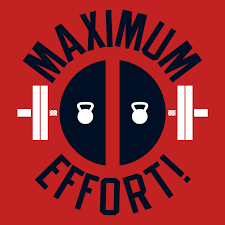
It is important not to go all the way, but to “keep” a few repetitions.
Make sure you feel you could have done a few extra repetitions at the end of your set. The term reps in reserve (RIR) is also used to express your fatigue in a set. You simply calculate your RIR by determining the number of repetitions that you have left “in the tank.” An RIR of 0 is, therefore, a maximum load; you could not have done any extra weight or repetitions and you have therefore gone to the so-called muscle failure. You still had 3 extra repetitions? Then the RIR is 3.
The RIR is very useful for determining what weight you use during an exercise if you do not know exactly what your 1RM is. If you plan to do multiple sets, find a weight that allows you to put your first set on RIR 3, and keep that weight for the following sets. RIR is not a direct factual way to measure the intensity, but a personal indication to determine how heavy each set has been.
| RIR | Description effort |
| 0 | maximum effort (1RM) |
| 0.5 | I could maybe do 1 more repetition |
| 1 | I could certainly do 1 more repetition |
| 1.5 | I could certainly do another 1, maybe 2 more |
| 2 | I could certainly do 2 more repetitions |
| 2.5 | I could certainly do another 2, maybe 3 more |
| 3 | I could certainly do 3 more repetitions |
| 3.5 | I could certainly do another 3, maybe 4 more |
| 4 | I could certainly do 4 more repetitions |
| 4.5 | I could certainly do another 4, maybe 5 more |
| <5 | I could certainly do 5 more repetitions |
Advice
Are you a beginner? Then I advise you to “keep” 3 to 4 repetitions in almost all your sets and training sessions (RIR 3 or 4). This means that you still have 3 or could perform 4 repetitions with the correct technique if you have done a set. This is necessary to work on good technology.
Advanced users can increase this to an RIR of 2 or 3 so that they can perform another 2 to 3 repetitions with a correct technique. Advanced athletes must therefore always keep something in the tank. Continuous maximum load quickly leads to a non-optimal training result due to overload, incorrect shape, and annoying injuries. By sensibly increasing the weight slightly, you make more progression.
My advice is to use these numbers in your feedback.




